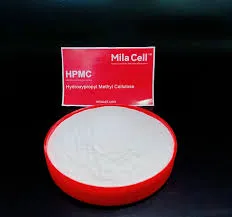
Jul . 31, 2024 19:58 Back to list
Solubility Characteristics of Hydroxyethyl Cellulose in Ethanol and Its Implications for Formulations
Hydroxyethyl Cellulose Solubility in Ethanol An Overview
Hydroxyethyl cellulose (HEC) is a non-ionic, water-soluble cellulose ether derived from cellulose, which has been modified through a process that introduces hydroxyethyl groups. Its unique properties make HEC a valuable ingredient in various applications, particularly in the pharmaceutical, cosmetic, and construction industries. One area of interest is the solubility of HEC in different solvents, including ethanol.
Ethanol, a common organic solvent, is widely used in laboratories and industries for its effectiveness in dissolving a variety of compounds. However, the solubility of polymers such as HEC can be influenced by factors like concentration, temperature, and the presence of other solutes. While HEC is primarily known for its excellent solubility in water, understanding its interaction with ethanol is crucial for formulators seeking to utilize this cellulose derivative in different environments.
Solubility Characteristics of HEC in Ethanol
HEC is designed to offer enhanced solubility and viscosity control in aqueous solutions. When it comes to alcohols, HEC displays limited solubility in ethanol. The solubility of HEC in this organic solvent can be influenced by its hydroxyethyl substitution degree; generally, as the degree of substitution increases, the solubility in ethanol may slightly improve, but it remains significantly lower than in water. This limited solubility is primarily attributed to the hydrophilic nature of the hydroxyethyl groups, which favor interaction with polar solvents like water over non-polar or slightly polar solvents like ethanol.
Moreover, temperature plays a significant role in the solubility of HEC in ethanol. An increase in temperature can lead to a decrease in the viscosity of the polymer solution, potentially allowing for better solvation and dispersion of HEC in ethanol. However, this solubility is still less than what is achievable in water. In practical terms, high temperatures may facilitate some degree of mixing but are not likely to make HEC fully soluble in ethanol.
hydroxyethyl cellulose solubility in ethanol

Applications and Implications
The limited solubility of HEC in ethanol has implications across various applications. In the pharmaceutical industry, for example, HEC is often used as a thickener, binder, or film-forming agent in formulations. In cases where ethanol is used as a solvent or co-solvent, formulators must carefully consider the concentration of HEC and the desired end properties of the formulation. Alternatives or blends that improve solubility may be explored to ensure effective performance.
In the cosmetic sector, where various alcohol-based products are prevalent, understanding the solubility of HEC in ethanol is crucial for product stability and effectiveness. The gel and cream formulations often require a balance between viscosity and solubility, and knowing the limitations of HEC in alcohol can guide formulation strategies to achieve desired textures and performance.
Conclusion
In summary, hydroxyethyl cellulose exhibits limited solubility in ethanol, influenced by parameters such as the degree of substitution and temperature. While HEC is largely soluble in water, its interaction with ethanol requires careful consideration in formulations across different industries. Recognizing the limitations and properties of HEC can aid in optimizing its use in a wide array of applications, ensuring that products meet both performance and quality standards. As research continues, further insights into enhancing solubility and compatibility with various solvents will likely expand the utility of HEC in diverse settings.
-
Versatile Hpmc Uses in Different Industries
NewsJun.19,2025
-
Redispersible Powder's Role in Enhancing Durability of Construction Products
NewsJun.19,2025
-
Hydroxyethyl Cellulose Applications Driving Green Industrial Processes
NewsJun.19,2025
-
Exploring Different Redispersible Polymer Powder
NewsJun.19,2025
-
Choosing the Right Mortar Bonding Agent
NewsJun.19,2025
-
Applications and Significance of China Hpmc in Modern Industries
NewsJun.19,2025







